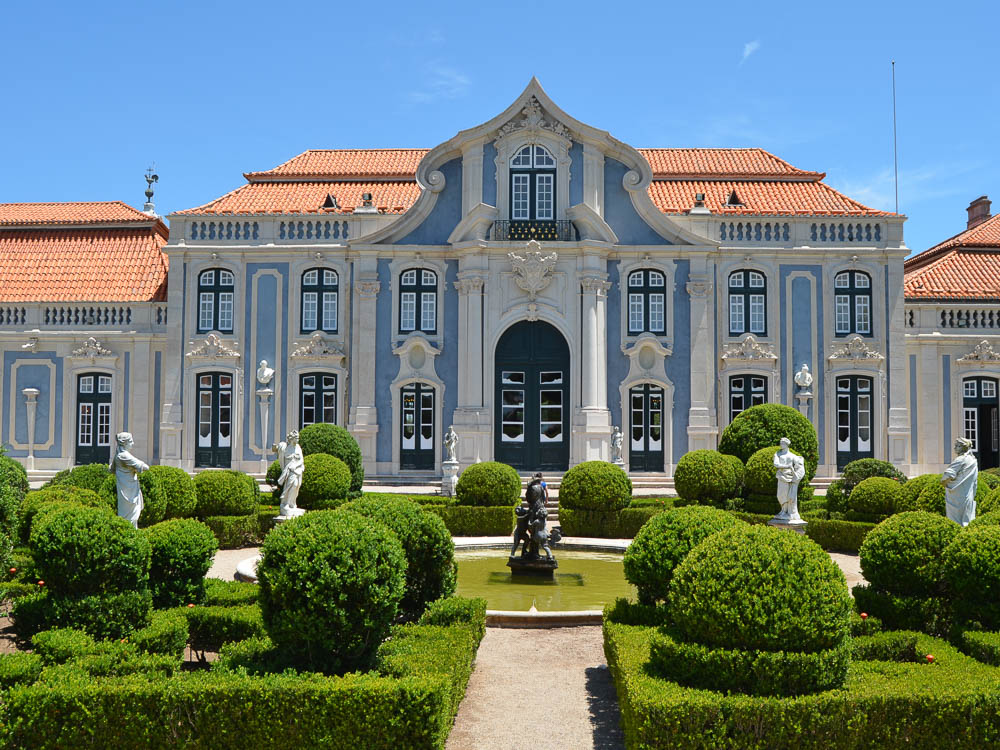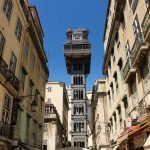Queluz Palace is an 18th century royal residence that is known as the Portuguese Versailles. Though it’s less known than other palaces, it’s definitely worth a visit! Here’s what you need to know about it.
Located between Lisbon and Sintra, Queluz Palace, or Palácio Nacional de Queluz, is less famous than other Portuguese palaces, but I think it’s time it receives the recognition it deserves!
Built in the 18th century, it became the official royal residence after Ajuda Palace caught fire in 1794. It has truly remarkable interiors and impressive gardens that provide a look into that century’s trends and preferences.
Nowadays, Queluz National Palace serves as a lasting emblem of Portugal’s cultural legacy, allowing us visitors to experience historical settings once frequented by monarchs. That’s why today I’ll tell you all about the palace’s highlights and history so you can plan your visit to one of Portugal’s most beautiful palaces.
Queluz Palace – in a nutshell
- Highlights: Throne Room, Music Hall, Ballroom, gardens
- Opening hours: daily, 9am to 6pm
- Best time to visit: spring and fall, early morning or late afternoon
- Tickets / price: € 13 (palace + gardens), € 6 (gardens)
- Recommended duration of visit: 2h
- Address: Largo Palácio de Queluz, 2745-191 Queluz, Portugal
- Nearest station: Queluz-Belas

Index
- History
- Architecture
- Gardens
- Opening times and best time to visit
- How to get tickets?
- How to get there?
- Attractions nearby
- Where to stay?
- Accessibility and other info
1. History
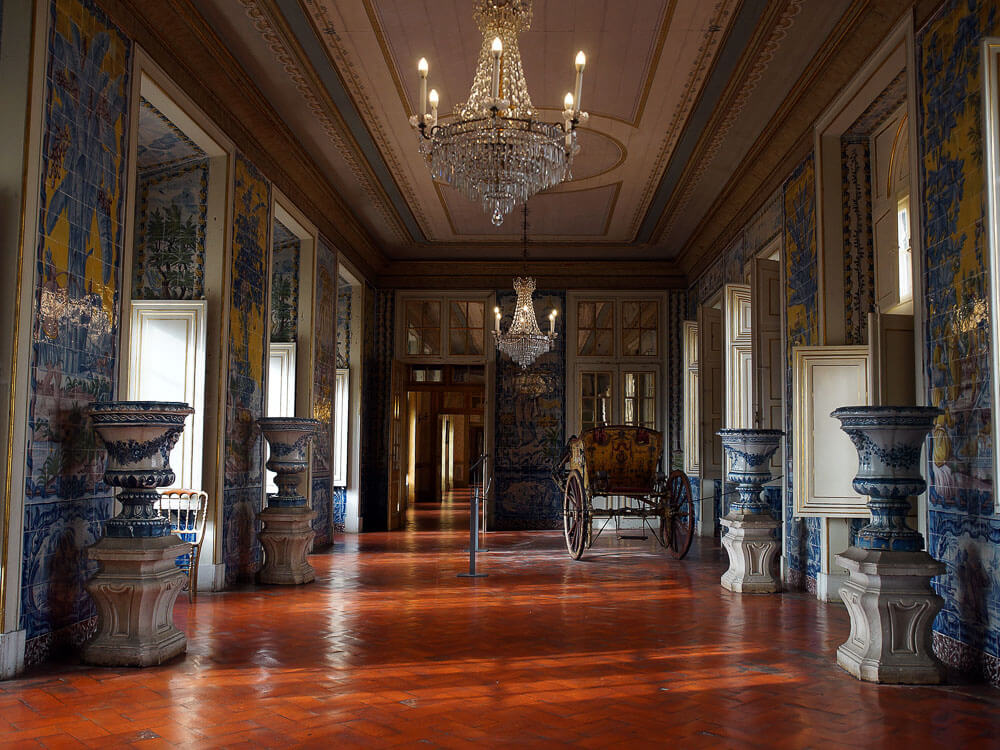
The Queluz National Palace dates back to 1747 when Pedro de Bragança, who would later become King Pedro III, planned it as a summer retreat. It was the wealth from Brazil’s gold that paid for its construction, and the Marquis de Pombal, Portugal’s ruler in practice, encouraged such spending as he managed the country.
The construction of the palace was halted after the 1755 earthquake, and it was then redesigned to better withstand future seismic activities.
After King Pedro III died in 1786, the palace became a discreet place of incarceration for his wife, who became known as Queen Maria The Mad after she began experiencing mental health issues. She lived at the palace until her passing.
The Queluz Palace only became the official royal residence after a fire damaged Ajuda Palace in 1794, and stayed that way until 1807, when Napoleon’s forces caused the royal family to flee to Brazil.
They returned in 1821 but King João VI chose to live at Mafra Palace over Queluz, which was then left for Queen Carlota Joaquina.
After the monarchy was abolished, the palace became a state property in 1908. Unfortunately, a fire in 1934 greatly affected the palace, and it had to undergo extensive restorations until it finally reopened as a museum in 1940.
2. Architecture
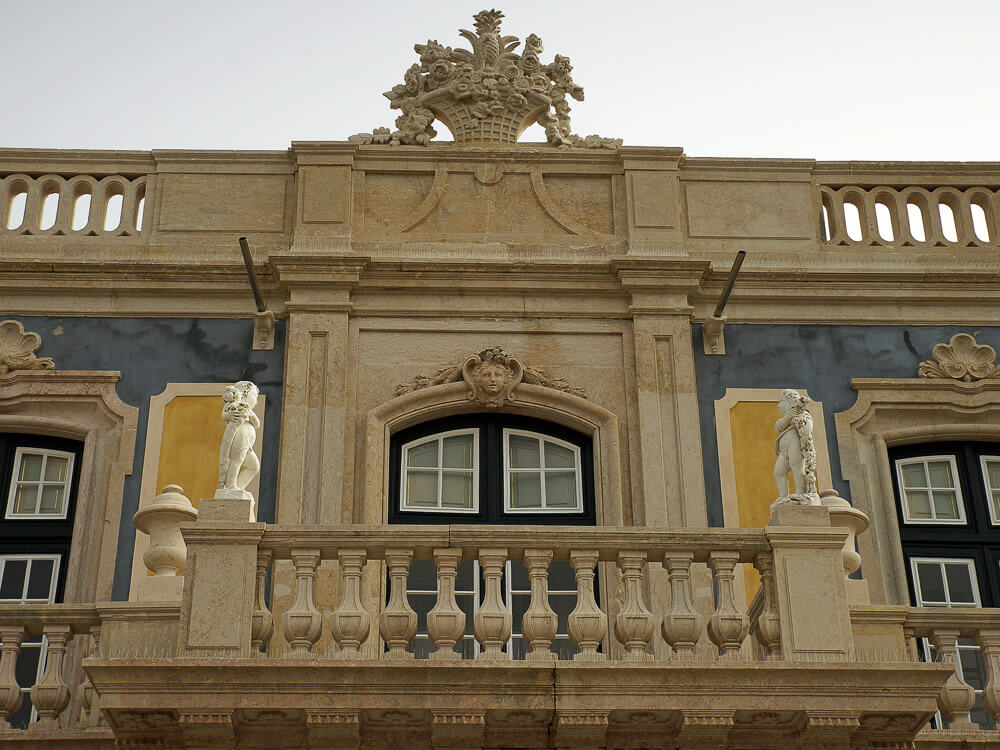
The National Palace of Queluz was designed by architect Mateus Vicente de Oliveira, who integrated different styles into the construction, such as Rococo, Baroque and Neoclassical. The palace is often called the Portuguese Versailles, though it’s much smaller than the original one.
After Lisbon’s 1755 earthquake, there was concern about future seismic activity, which led to changes in Queluz Palace’s design toward lower and longer buildings rather than taller ones for improved earthquake resistance.
The main entrance of Palacio de Queluz presents a stark façade with balanced wings leading to a semi-circular courtyard featuring a statue of Queen Maria I. But don’t let the simplicity of this area fool you! Upon entering the palace, you’ll find lavishly decorated interiors that will leave you in awe.
Added in 1798, the Dona Maria Pavilion is one of Queluz National Palace’s later extensions from Queen Maria I’s time. Previously part of royal quarters and now state-owned since early last century, it provides lodging for visiting heads of state.
2.1. Interiors of the National Palace of Queluz

The interiors of the National Palace of Queluz showcase the prominent 18th-century design attributed to French architect Jean-Baptiste Robillon. His influence is evident in both the gardens and within the palace, where walls and ceilings feature gold-painted designs, as well as azulejos and materials from Brazil, Denmark and Italy.
Here are some of the main rooms that you’ll be able to see during your visit:
- The Throne Room: a central feature of Queluz National Palace’s ceremonial history. Built around 1770, this reception hall features gilded woodwork in Regency-Rococo style with mirrors that reflect light from chandeliers. Historically used for parties and receptions, it now hosts concerts and government events.
- Queen’s Dressing Room: a glimpse into private royal quarters at Palacio de Queluz. This area served as a secluded space for queens to host guests among pastel furnishings and panels illustrating personal grooming scenes from their era.
- Music Room: remains largely as it was originally designed, with carvings of musical instruments on its ceiling enhancing its sound quality for music performances.
- Ambassador’s Room: displays painted ceilings showing royalty engaged in serenades, reflective of court life romance against marble floors and mirrored panels accented by gold leafing. These are replicated images, as the originals were lost to the 1934 fire. Chinese porcelain vases are also present here, highlighting the cultural exchange and global influences that were prevalent in Portuguese art and architecture of the era.
- King’s Bedroom: also known as the Dom Quixote Room, with scenes from Cervantes’ hero. This is the place where seven out of nine children of João IV and Carlota Joaquina were born (including King Pedro IV, who interestingly also died here).
3. Gardens of Queluz National Palace
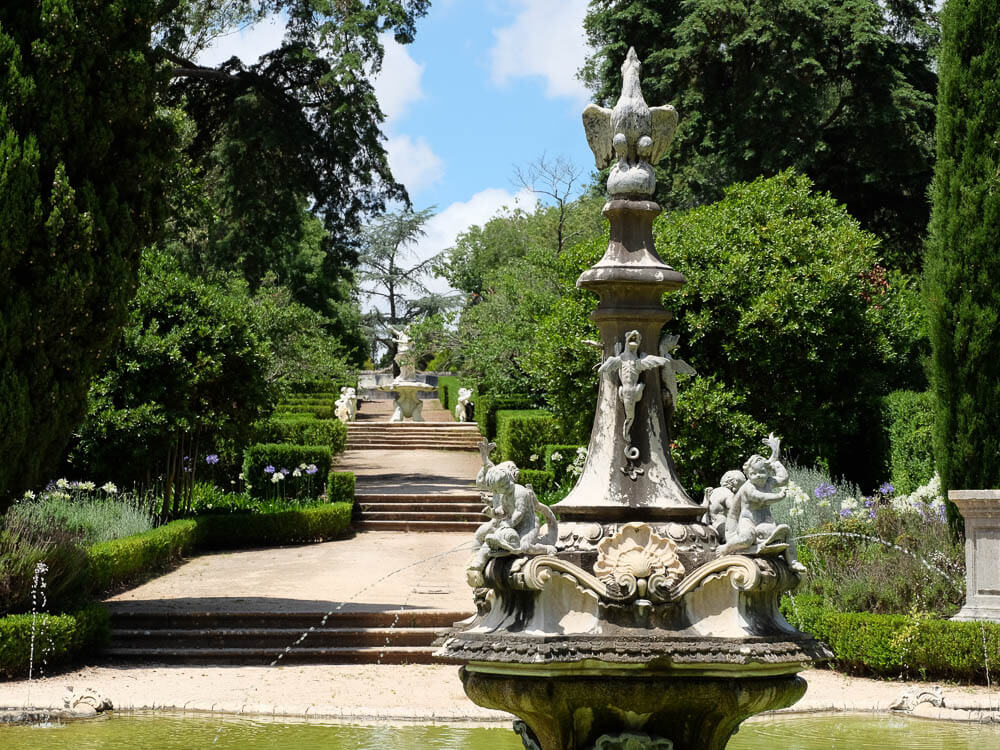
The gardens of Queluz Palace are a notable example of French-style landscaping, characterized by symmetry and order. Visitors can walk through several parterre gardens such as the Hanging Garden and Malta Garden, each with its own unique design. The pathways form a geometrical grid that leads guests past diverse vegetation and connects lakes with water features.
A key feature is the Grand Cascade fountain, which reflects historical artistry and engineering. Throughout the area, among trees such as cypress, magnolia, mulberry, and yew, there are also lead statues inspired by classical themes, created by the English sculptor John Cheere.
The garden includes two significant areas: the Tiled Canal, where royal family members enjoyed boat rides, featuring paintings that show 18th-century life, and Medallion Lake, the centerpiece and largest lake in the palace’s garden, built in an octagonal shape.
Also present is the Fountain of Neptune depicting Neptune on his chariot, and the House of Music pavilion where royals listened to music outdoors.
Between 1769 and 1780 four greenhouses were built at Queluz National Palace. They were meant to house exotic plants and pineapples, and became known as the Botanical Garden or Garden of Greenhouses.
4. Opening times and best time to visit
The National Palace of Queluz opens at 9 am and closes at 6 pm every day, while the gardens remain open until 6:30 pm for those looking to spend a bit more time outdoors. Keep in mind that the last admission is one hour before the closing times for both sites.
The best seasons to visit Queluz Palace are fall and spring, as there are fewer tourists and more pleasant weather. That way, you’ll be able to visit at your own pace, without rush, and enjoy both the interior spaces and outdoor areas without worrying about extreme temperatures.
And, if you’re looking for a quieter and more intimate experience, I recommend visiting early in the morning or later in the afternoon. This usually helps avoiding peak visitor hours and provides more photo opportunities with fewer people around.
5. How to get tickets?
You can either get your tickets at the palace’s box office or through the official website. If you prefer the first option, just make sure to avoid arriving there from 12pm to 1pm, as the box office is closed during this time.
I always think it’s best to buy tickets in advance, though, which you can do at the Queluz Palace’s website. They also offer “skip-the-line” options, which can be very useful during peak season, when visitor numbers are higher than usual.
And, if you’re interested in learning more about Queluz Palace during your visit, there’s an audio guide app available for download for a small fee. I highly recommend getting it, as the app provides commentary as you move through the palace and gardens at your own pace, offering context and information for a self-guided tour.
6. How to get there?
Queluz National Palace is located about 16 km from the city centers of Lisbon and Sintra, making it easily accessible from both cities.
If you’re traveling from Lisbon, board the train at Oriente, Rossio, or Entrecampos stations on the Sintra line and get off at Queluz-Belas station. From there, you’ll go on a 1km walk through local neighborhoods to reach Queluz Palace.
Alternatively, you can also take bus number 1717 from Lisbon, which takes you through various districts and stops in Queluz, with the palace being a 15-minute walk from this stop.
On the other hand, if your starting point is in Sintra, take the train towards Lisbon and exit at Monte Abraão station. From here, it’s also a 1km walk to the palace.
7. Attractions nearby
Queluz is a mostly residential area, which means there aren’t as many attractions within walking distance. However, there are some interesting experiences just a short drive away.
The Aquário Vasco da Gama, for example, is about 10 km from Queluz Palace and is definitely worth a visit. It focuses on marine life, providing a look at aquatic ecosystems, and the maritime history of Portugal, paying tribute to the explorer Vasco da Gama.
If you’re interested in sports, Estádio da Luz is around 11km from Queluz, and is where SL Benfica plays. The stadium’s museum, Museu Benfica – Cosme Damião, displays the club’s history with exhibits that include trophies and information about players.
8. Where to stay near Queluz Palace?
Since Queluz isn’t a very tourist-centric area, there aren’t as many accommodation options there. But, of course, there are a couple of great options, especially if you’re interested in staying in a quieter neighborhood and getting a closer look at the local lifestyle. Here are my main recommendations:
- Pousada Palácio de Queluz: this hotel is located in a historic building associated with the Royal Guard of the Court at the Palace of Queluz. It provides guests with large rooms that include wooden furniture, air-conditioning, work desks, and minibars. It also features an on-site restaurant and bar.
- Vila Libania: situated only a short walk from Queluz National Palace, this hotel is set in a restored 19th-century manor, offering apartments with modern facilities while retaining its historical charm. Guests can enjoy access to gardens and a children’s pool. The apartments feature wood floors and garden views along with complimentary WiFi and living areas that have sofas and flat-screen cable TVs.
9. Accessibility and other information
Visitors can only access the ground floor of the National Palace of Queluz, which makes this a particularly accommodating attraction for visitors with limited mobility. It’s also possible to reserve wheelchairs in advance to ensure accessibility throughout all the palace’s areas.
Also, keep in mind that comfort should be your number one priority when visiting Queluz Palace, or any other palace in Portugal. Choose practical walking shoes, bring an umbrella or raincoat if it’s the rainy season, and don’t forget to wear sunscreen!
And if you’re visiting during summer and want to have an even more special experience, Queluz Palace hosts classical music concerts on its grounds. Make sure to check the schedule beforehand and plan accordingly if you want to attend an unforgettable performance set against a historical background!
Don’t miss out on the opportunity to see Portugal’s Versailles!
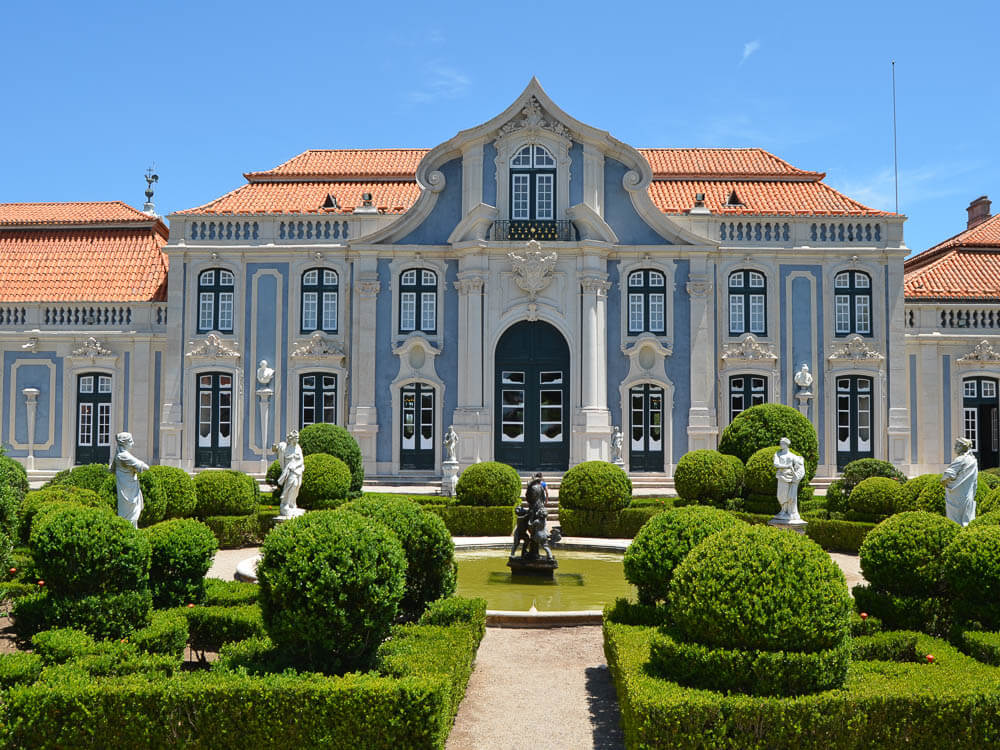
Queluz National Palace may be less known than other palaces, but it’s a key historical site that reflects the country’s identity and takes visitors on a journey through history and culture.
With its well-preserved Rococo interiors and French-inspired gardens, you’ll understand more about national heritage and learn about Portugal’s past, all while exploring the beautiful “Portuguese Versailles”.
It’s an experience that I highly recommend to anyone traveling to Portugal, whether it’s their first or fifth time in the country!

